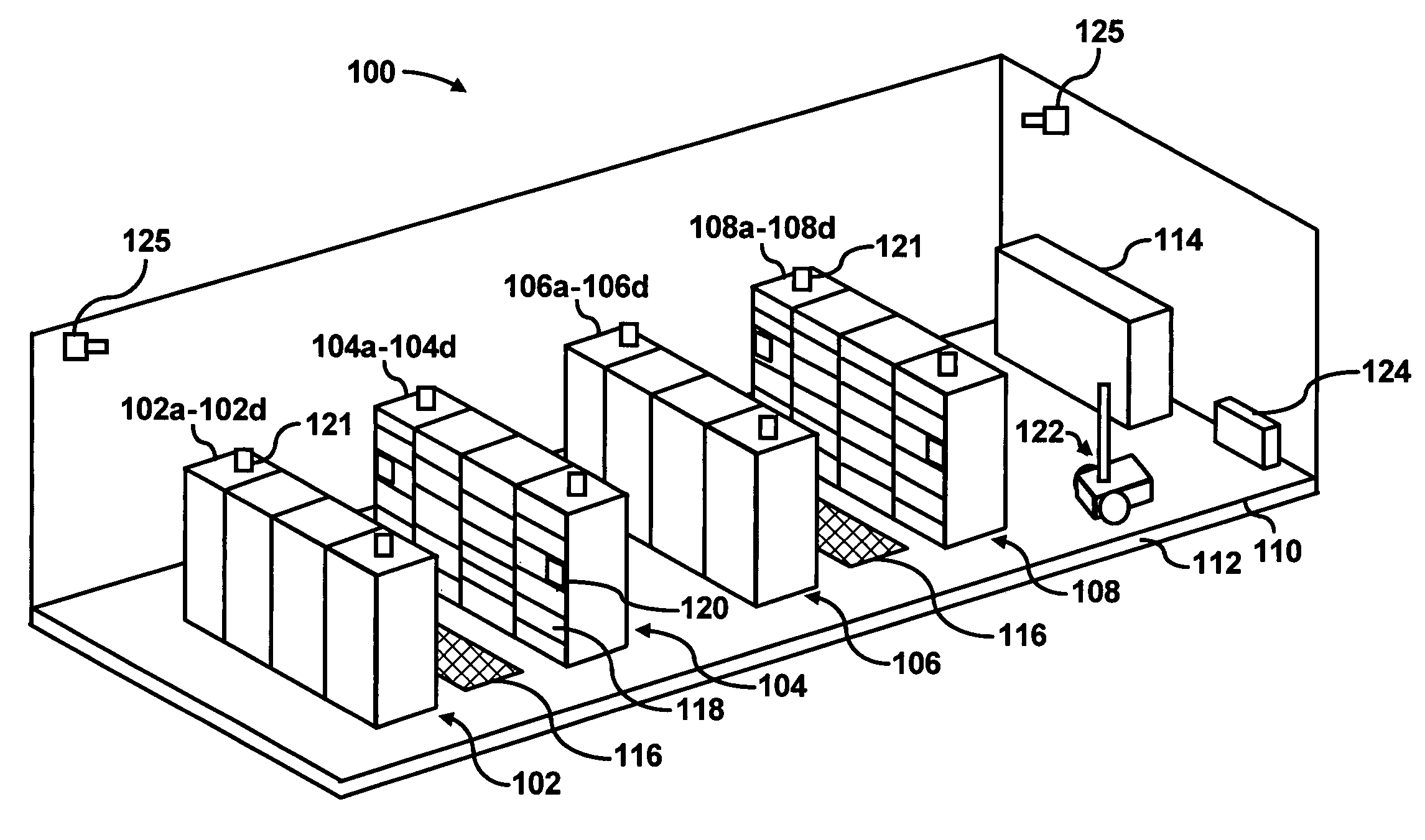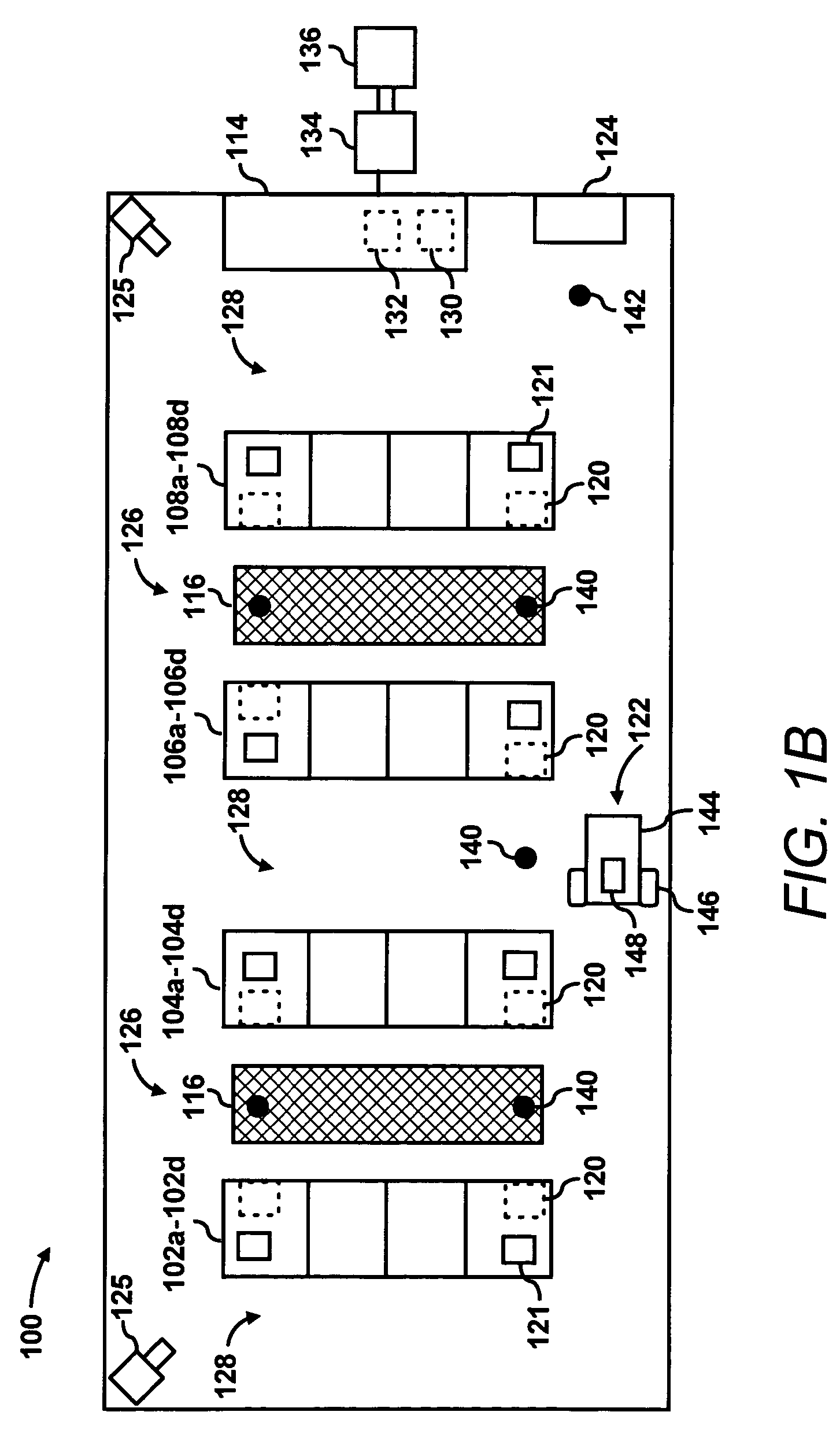Data connectivity with a robotic device
a robotic device and data technology, applied in the direction of electric programme control, program control, instruments, etc., can solve the problems of data center cooling, temperature exceeding a predetermined temperature range, and computer systems in the data center may only utilize around 30-50% of the maximum cooling capacity
- Summary
- Abstract
- Description
- Claims
- Application Information
AI Technical Summary
Benefits of technology
Problems solved by technology
Method used
Image
Examples
Embodiment Construction
[0022]For simplicity and illustrative purposes, the present invention is described by referring mainly to an exemplary embodiment thereof. In the following description, numerous specific details are set forth in order to provide a thorough understanding of the present invention. It will be apparent however, to one of ordinary skill in the art, that the present invention may be practiced without limitation to these specific details. In other instances, well known methods and structures have not been described in detail so as not to unnecessarily obscure the present invention.
[0023]Throughout the present disclosure, reference is made to “cooling fluid” and “heated cooling fluid”. For purposes of simplicity, “cooling fluid” may generally be defined as air that has been cooled by a cooling device, e.g., an air conditioning unit. In addition, “heated cooling fluid” may generally be defined as cooling fluid that has been heated. It should be readily apparent, however, that the terms “cool...
PUM
 Login to View More
Login to View More Abstract
Description
Claims
Application Information
 Login to View More
Login to View More - R&D
- Intellectual Property
- Life Sciences
- Materials
- Tech Scout
- Unparalleled Data Quality
- Higher Quality Content
- 60% Fewer Hallucinations
Browse by: Latest US Patents, China's latest patents, Technical Efficacy Thesaurus, Application Domain, Technology Topic, Popular Technical Reports.
© 2025 PatSnap. All rights reserved.Legal|Privacy policy|Modern Slavery Act Transparency Statement|Sitemap|About US| Contact US: help@patsnap.com



